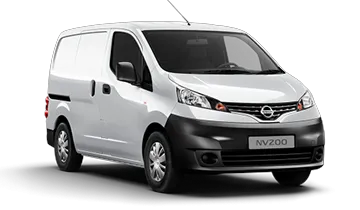VAN BODYSTYLE GUIDE
Vans or light commercial vehicles come is all shapes and sizes to meet the specific requirements of many different types of business. Here at LetsTalk Leasing, we have compiled a simple overview of some of the popular van body styles to help you identify what option would be best for you.
PANEL VAN
Panel vans are the most common form of body style seen on the UK roads and are popular with many different and diverse types of business. They often come in a number of body types to meet the requirements of different users with low, medium and high roof options along with a choice of short, medium and long wheelbase dimensions available.
The box shape interior, along with good large square rear loading area make this a very popular choice. All major European commercial vehicle manufacturer will offer a panel van option as part of its broader offer.
To maximise security and storage capacity the panel van is recognisable by the absence of any rear or side windows, larger side mirrors are present to ensure good visibility.
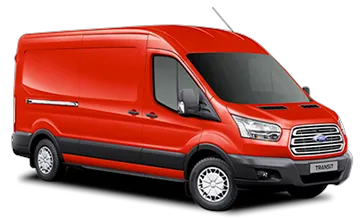
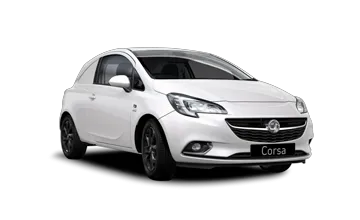
CAR-DERIVED VAN
A car-derived van is the name suggests a duel purpose vehicle that has been adapted from a passenger car. The exterior will look similar to a car whilst the interior will be more aligned to that of a van. The car-derived van is designed to weigh no more than 2 tonnes when loaded fully.
Characteristics will include no side windows in the rear of the vehicle, no rear seats or rear seatbelts/ mountings. The vehicle must also be recorded as a car-derived van under 'body type' in the vehicle's registration document.
Car-derived van's are the only light commercial vehicles that are subject to the same speed limits as a car.
MINIBUS
Typically a minibus is a van derived vehicle that is capable of carrying between 8 and 16 passengers, minibuses are often classed by the total number of seats including the driver i.e. 9 - 17 seats.
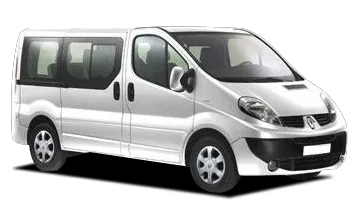
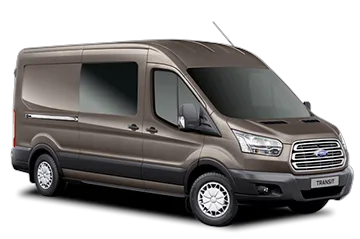
CREW CAB OR DOUBLE CAB VAN
A crew cab van is an extremely versatile van with two rows of seating for the driver and passengers. Typically 3 seats at the front of the with an additional 3 or 4 seats behind. Side windows are present for the rear passengers.
The second row of seating reduces the load capacity cargo space but does offer a great solution when you need a vehicle that combines both multiple passengers with a good load capacity. A bulkhead is fitted behind the second row of seating to formally separate the seating area from the load space.
DROPSIDE VAN
Dropside vans have an open load area which make them ideal for transporting large, bulky or heavy items which would be difficult to manoeuvre in and out of a standard panel van.
The side panels can be folded down so that goods can be loaded and unloaded easily from either side or the rear of the vehicle. Popular with the construction industry for moving large tools and materials.
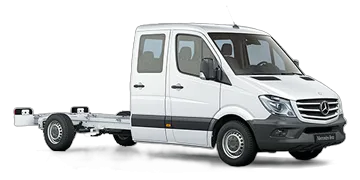
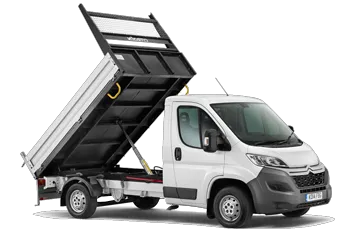
TIPPER VAN
A tipper van has a very similar appearance to a drop side van, with an open load area which make them ideal for transporting large, bulky or heavy items which would be difficult to manoeuvre in and out of a standard panel van.
The side panels can be folded down so that goods can be loaded and unloaded easily from either side or the rear of the vehicle.
In addition to these features the tipper van has a hydraulic arm that allows the front end of the open load area to rise and the contents to then freely slide down and off the load area. Ideal if you are in the business of transporting aggregates.
CHASSIS CAB VAN
A chassis cab van is essentially just a basic van chassis, offering greater flexibility for the user. The basic chassis can then be adapted so as to meet the specific needs of the customer, either with more common conversions which include standard drop side or tipper to more tailored and bespoke conversions such as an ambulance, catering van or horsebox.

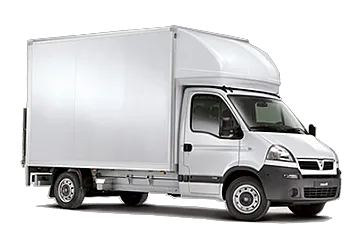
BOX VAN
A box van is as the name suggests a van with a large cube-shaped cargo area which is separate to the cab. The cargo area offers large storage capacity and as such is popular with many users that wish to transport large loads for example parcel delivery businesses and home removals.
LUTON VAN
A Luton van is a version of a box van, this has the cube-shaped cargo area extended to provide additional storage over the cab. The name originated from the original box van conversion which was an adaption of the Bedford van produced at their plant which was located in Luton.

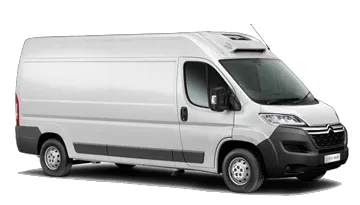
REFRIGERATED VAN/TEMPERATURE CONTROLLED VAN
A refrigerated van is one where the cargo area is temperature controlled and used to transport goods which are perishable. Along with food items other specialist businesses such as pharmacies use temperature controlled vans so as to maintain a constant temperature whilst the goods are moved around the country.
ELECTRIC VAN
An electric van is not really a body style more an alternative fuel to the more commonly used fuels types of diesel and petrol. The technology incorporated into electric vans today continues to improve their offering with an extended driving range and a much more affordable cost.
The electric vehicle charging infrastructure is also continuing to expand at a pace. Reduced running costs, road tax exemption and reduced or exempted congestion charging are just some of the attractions of using an electric van and these benefits along with driving restrictions imposed in some inner cities now position the electric van as a real option.
